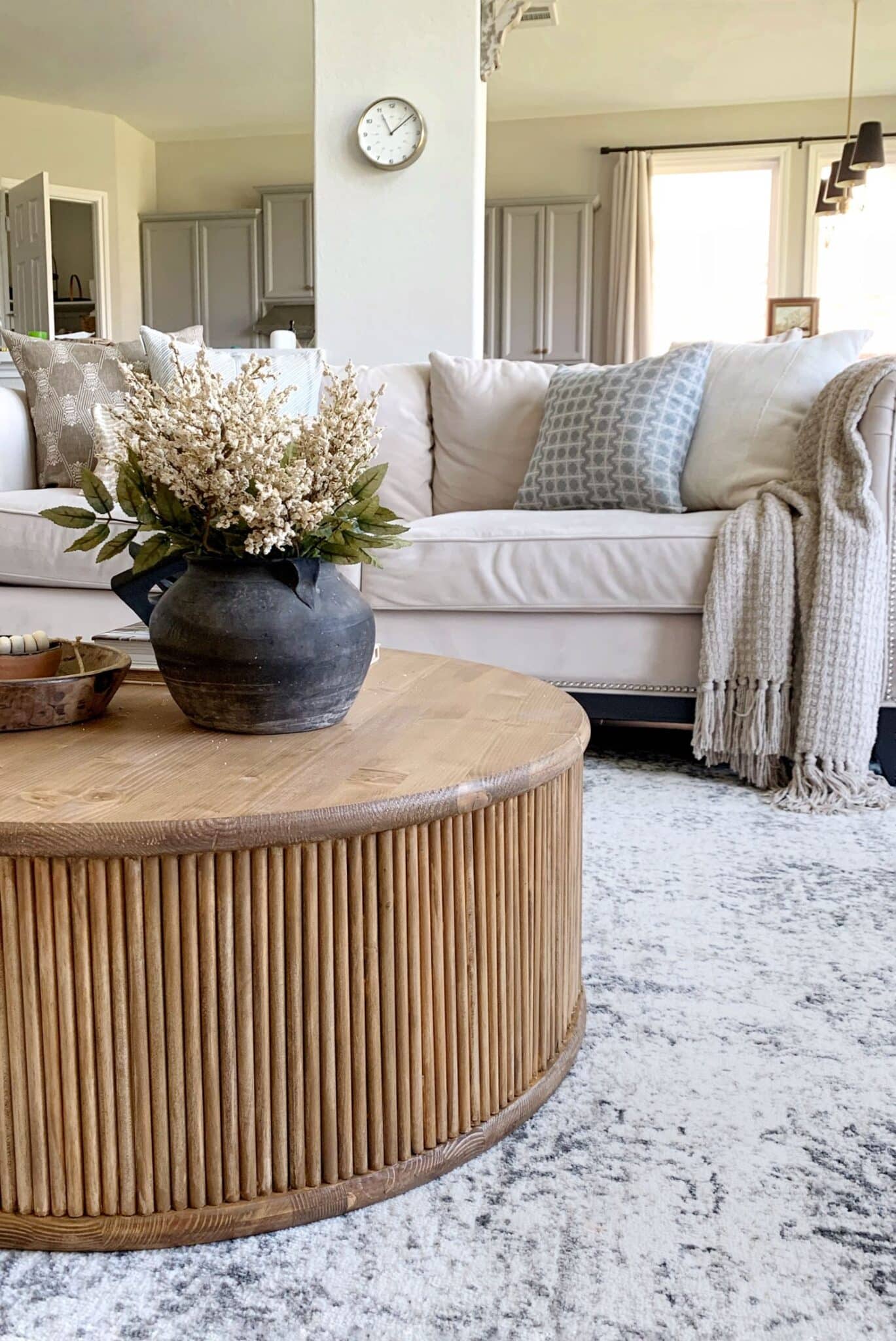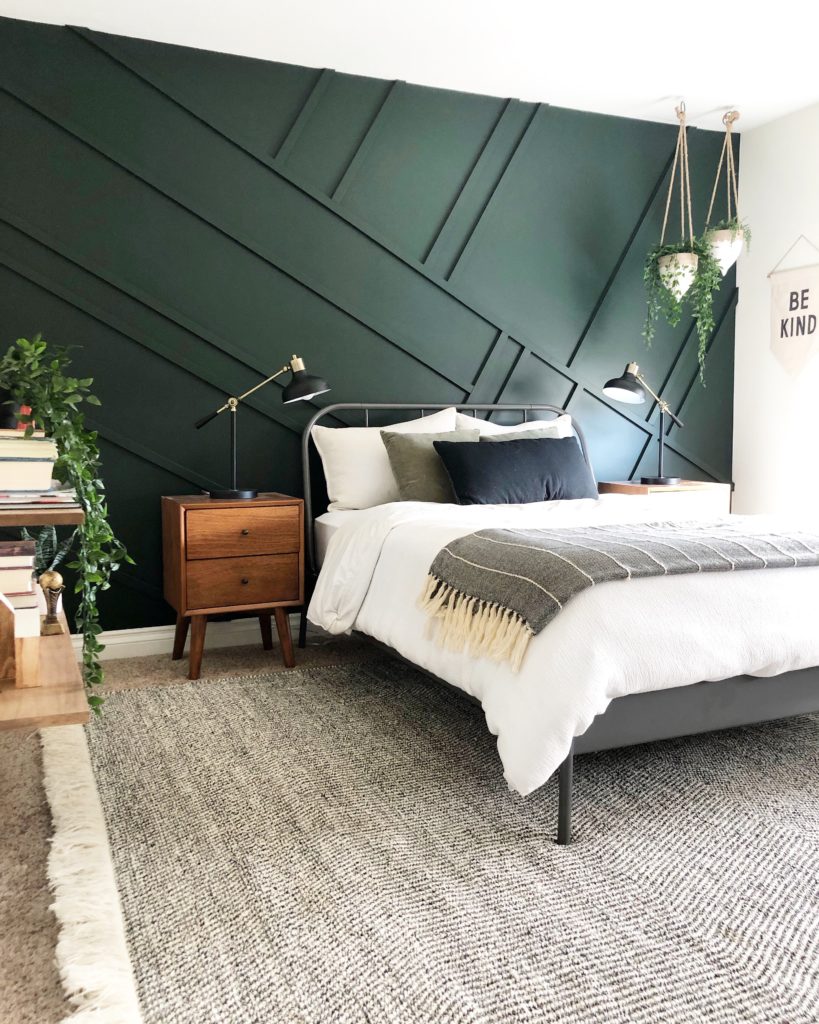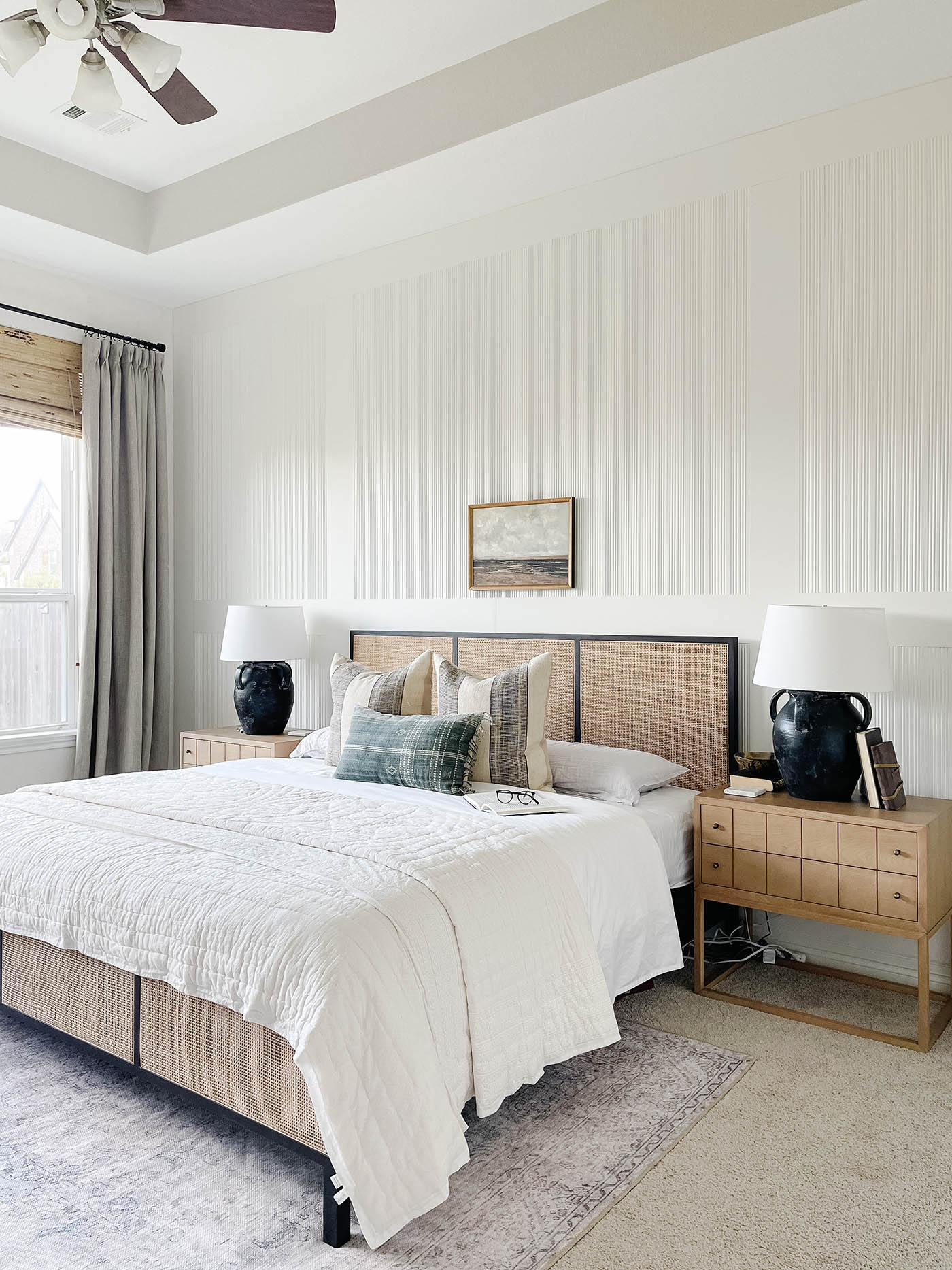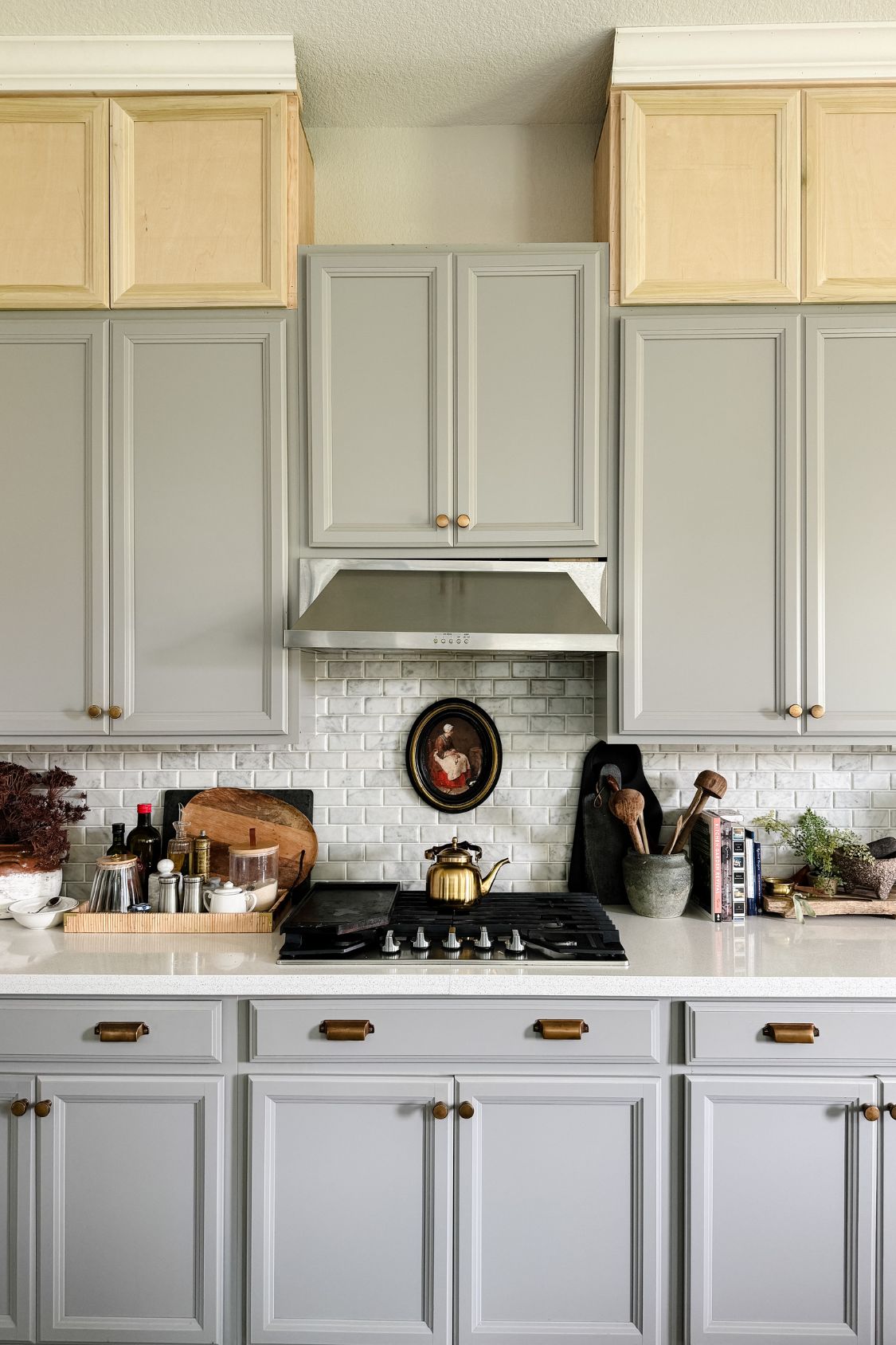How to Install Pre-Pasted Wallpaper for Beginners

Over the past few years I have installed many different wallpapers in my home from unpasted wallpaper to renter-friendly peel and stick. I’ve even tried my hand at painting a DIY faux wallpaper. If you have never worked with wallpaper before, I will show you how to install pre-pasted wallpaper and get the best results with my easy to follow step-by-step guide.
If there was one thing I was ever scared of in the DIY world, it was how to install pre-pasted or traditional wallpaper. Oh boy, did the sound of that make me shiver. I delayed it until I finally got to my dining room and decided hey, it’s time to get over this irrational fear and put up wallpaper that wasn’t peel and stick. Before attempting my wallpaper project for the first time, I scoured the internet for guides and video tutorials. I went through dozens of sources to find all the information I needed so YOU don’t have to! Here I am compiling all that knowledge into this comprehensive tutorial on how to install traditional wallpaper, along with video clips from my Instagram highlights!

I completed my dining room makeover in April 2020 but never got around to writing a tutorial on it. In fact, Clare paint wrote about it before I got a chance! (not complaining at all, haha) So this blog post is going to be a series about my dining room makeover and I’ll cover all projects, including wallpaper and moulding installation as well as product sources.
Alrighty so on to my traditional wallpaper tutorial. For my dining room design I wanted a neutral design which would go with a variety of paint colors and not overpower the DIY raised panel moulding design. I ended up picking this almost Ikat like print from Magnolia home in Black and White and it complements the design perfectly! If you’re a more visual person, you should check out the wallpaper stories on my Instagram here.
FAQs About Wallpaper Installation

I highly recommend reading this section before starting your wallpaper project!
What are the different types of wallpaper?
There are three different types of wallpaper available and installation varies according to the type of wallpaper you choose.
Unpasted Wallpaper
A plain roll without any adhesive on it. You either apply wallpaper glue directly on the back using a paint roller or you roll the wallpaper paste onto the wall and then put the paper on top of it.
Pre-Pasted Wallpaper
This type of wallpaper has an adhesive coating on the back that you need to activate by applying water to it. You can either dunk the paper in a bucket of water (old school style) or apply water to it with a soaking-wet paint roller. Alternatively, you could use a spray bottle to activate the glue as well but I find that it’s not enough water.
Peel and Stick Wallpaper
It has an adhesive backing covered with a liner that you peel off before sticking to the wall. You don’t need any additional glue or water and it’s generally easy to remove, which makes it renter-friendly as well.
Which is the easiest wallpaper to install?
I personally love unpasted or pre-pasted wallpaper just because they’re so much easier to move around and adjust while you are positioning wallpaper panels. With peel and stick the paper tends to stick to itself and it can be tricky to realign edges of the wallpaper once it’s on the wall. A lot of that depends on the quality of the peel-and-stick wallpaper too—generally, higher-quality products are much easier to work with.
How much does it cost to have someone install wallpaper?
The cost to have someone install wallpaper can be very high. Obviously wallpaper installers have years of experience and they will be much faster than you are when starting out. I once spent $400 to wallpaper the tiniest of closets when I was pregnant and didn’t have the energy to do anything. You could save thousands of dollars on installation if you just do it yourself. With some careful planning you can easily install wallpaper yourself.
What is a plumb line?
The plumb line is a tool that allows you to make a perfectly straight vertical line on the wall surface. I like using a laser level to guide my wallpaper installation because it’s a more hands off method. You can project a level horizontal or vertical line onto flat surfaces as a guide. Perfectly straight walls don’t really exist which is why it’s important to use a level to align your wallpaper.
What is booking a wallpaper?
Booking a wallpaper means to fold the wallpaper over itself, bringing each opposite end of the wallpaper panel to meet in the middle. Your wallpaper instructions will tell you if your paper needs to be booked, pre-pasted wallpaper does mostly need to be booked. Depending on the type of wallpaper it can expand up to 1/4″ when activated by water. To avoid any expansion while it’s on the wall, you let it book over itself for a few minutes to eliminate any wrinkles and bubbles from forming later.
How do I calculate how much wallpaper I need?
Calculating how much wallpaper you need can be intimidating but most wallpaper companies have wallpaper calculator tools on their websites that are easy to use. Measure the height of your wall and input the height of each wall into the calculator. The width of the wallpaper can vary from brand to brand so it’s important to determine how many panels you can fit into your particular wall width. Remember to always add an extra roll because there can be a lot of wasted wallpaper when you have a lot of doors and windows in a space.
What is a relief cut?
A relief cut is a small cut you make to the wallpaper to help it wrap around whatever it in the way. This ensures the wallpaper lays flat against the wall around an obstacle like a door or a window and fits tightly into corners. Relief cuts are generally made at the corners at a diagonal angle.
How do I cut around outlets?
First, remove the switch plate or vent cover before installation. Next, apply the length of the wallpaper as usual and cover the socket/switch opening. Feel for the opening through the paper (trust me, it’s easy), and start slowly cutting the hole for the outlet or vent. You’ll want to leave 1/4” or so from the opening edges and wrap that leftover part behind the drywall or plaster. This might be overkill for some but this way you always end up getting a seamless finish.
Wallpaper Installation Tools
- Wallpaper Kit (this kit comes with a smoothing tool, a flexible tape measure, smoothing brush, and an X-Acto knife)
- Primer
- Wallpaper of Choice
- Roller
- Sponge (Damp Sponge)
- Bowl of Warm Water
- Sharp Utility Knife (if you get tools separately you will need a sharp box cutter or straight edge blade)
- Seam Roller
How to Install Pre-Pasted Wallpaper

Step 1: Prep the Surface

If you have textured walls like I do (I have knockdown texture which isn’t rough but still has grooves) then you might want to skim coat your walls with joint compound before proceeding. However, I am the laziest DIY-er in the world and I did not skim coat my walls! I don’t mind the little bit of texture peeking through. I went ahead and did one extra step of using a wallpaper primer. This step makes sure the adhesive forms a good seal and it doesn’t rip off drywall when you’re trying to remove the wallpaper at some point down the road. I just rolled it on with a roller and did 2 coats. If you have any damage to drywall, make those repairs and spackle and sand any holes in the wall.
Step 2: Choose the Starting Point

Once your walls are prepped you will choose a starting point to hang the first piece of wallpaper.Try to choose the most inconspicuous corner which will hide the final seam For example, a corner where a curtain is hung. If you start on an inside corner like I did, start about an inch or so on the adjacent wall so the seam isn’t directly on the crease where it’s more noticeable. If you choose a corner, measure an inch or two past the corner so the seam isn’t directly on the crease. Do a quick measuring check to ensure the seams of the next strips of wallpaper do not fall on any odd spots on the wall.
Step 3: Measure and Mark Panels

The next step is to measure the width of your wallpaper panel and mark that width with a pencil mark on the entire wall. This will help you figure out how many panels you need to cut. Draw guide lines for each panel using a straight edge ruler and your laser level.
Step 4: Cut First Wallpaper Panel

Measure the length of the wall and add 4″ to that number. This number is the length of your panels – we add two inches extra on both ends to accommodate for wiggle room. This allows you to cut excess wallpaper on both ends to give a clean edge. Cut panels using an xacto knife (if you buy the kit I recommend it comes with one and extra blades) or a sharp blade.
Step 5: Activate/Apply Glue

For pre-pasted wallpaper lay your panel front side down on a flat surface. Dip your roller in a bowl of clean water and roll over the back of the paper to wet completely. Leave no dry spots! If you’re using unpasted wallpaper you would just roll wallpaper adhesive onto the back using a paint roller. No water needed.
Step 6: Book Wallpaper

To book the wallpaper, fold over both ends to meet in the middle and press down. This is done to ensure the glue gets time to activate and moisture disperses evenly. Wait 2-3 minutes before taking the panel up to install the wallpaper.
Step 7: Apply to Wall

Take your first strip of wallpaper to the wall and unroll the top half of the paper. Start pasting from 2″ above the wall (remember we measured 2″ extra from the top and bottom?) this is just an estimate you don’t have to measure. Use a level to make sure it’s going straight down (I used my laser level as a reference) Smooth it onto the wall using the smoothing tool in the kit and your hands. You can lift up the paper to fix any mistakes or air bubbles. This is where traditional wallpaper is extremely forgiving. You can remove and readjust the pasted side as many times as you like because the glue doesn’t dry for a while. Smooth it down all the way until you get to the bottom and then use your xacto knife to make a clean cut at the bottom edge. Use the smoothing tool as a guide for your cut in a straight line.
Step 8: Next Strip and Clean Up

For the next panel repeat the previous steps, but this time make sure to align the pattern repeat to the first panel and leave no gap between the two panels and no overlapping either! Repeat the process until you get to the end of the wall. To trim off excess paper on the side, use the same cutting technique described. See, it’s not that hard to install traditional wallpaper! Take the wet sponge and clean off the excess paste on the wallpaper seams that might have spilled out. Get the top of the wall and the bottom of the wall and all seams. Dry with a clean cloth.

I am not gonna lie, the first two panels were HARD. I messed up and made incorrect measurements, cut one panel too short and redid it. However, by panel three I was a pro! (more or less lol) and I find traditional wallpaper easier to install. Keep a damp cloth with you to wipe away excess glue from the paper or work area. Take your time with aligning the paper! But most importantly, if I can get over my wallpaper fear then so can you! The end result looks amazing and I was so proud of myself. If you find this how to install pre-pasted wallpaper tutorial helpful please drop in a line in comments! Good luck!
More Wallpaper Inspiration
If you like the look of wallpaper, here is some wallpaper inspiration for you to try for your next project!










4 comments
Such a thorough guide! I’m about to put some contact paper on my basin cabinet and the advice on here was helpful with that too
yayyy! im so glad asra!!!